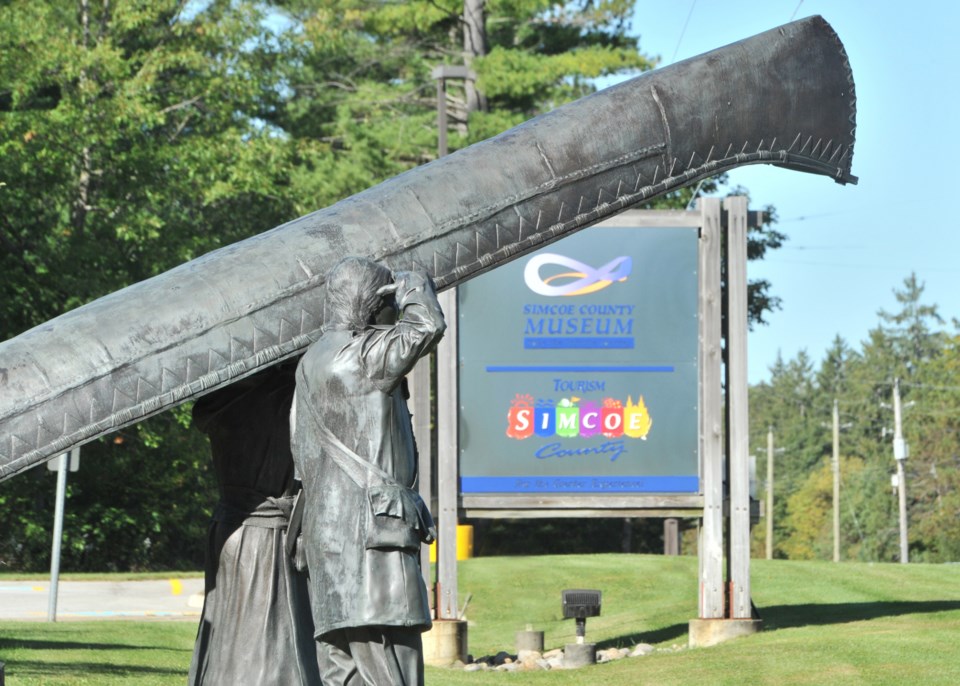Key artifacts previously housed at the Simcoe County Museum will be reunited with the Indigenous tribes whose ancestors created and owned them.
During Tuesday’s committee of the whole meeting, County of Simcoe councillors received a staff report on the removal of 19 Indigenous objects from Simcoe County Museum displays.
According to the report, museum staff had been alerted that the specific type of artifacts – false faces such as masks, headdresses and dolls – should not be displayed or photographed as they are sacred Indigenous objects.
Jeff Monague is an elder with Beausoleil First Nation. A former chief, Monague is a knowledge keeper for the Indigenous community.
“Those are ceremonial items. Ceremonial items are considered to be living things when they’re engaged as part of our ceremonies,” said Monague. “They should be treated with the utmost respect as any other spiritual artifact.”
Simcoe County Museum’s collection includes a number of Indigenous objects, with many on display in the Channen Gallery.
According to the staff report, in 2019, it was brought to the attention of museum staff that Haudenosaunee people believe false face masks should not be displayed, as they are sacred Indigenous objects.
The Iroquoian false face masks that make up the display were acquired between 1975 and 1980 and were purchased for use in the gallery displays.
“As such, they should be cared for in a respectful manner using traditional practices. These objects should not be photographed or exhibited in cases for public viewing,” noted Simcoe County Museum Curator Kelley Swift Jones in her report to council.
Given this new understanding, and that the current refurbishment in the Channen Gallery required their removal from display, staff recommended the objects be officially removed from the museum’s permanent collection and transferred to a suitable institution that will ensure these pieces receive proper care and safekeeping by Haudenosaunee people.
Jones said details have not yet been finalized about where the artifacts will go. She said staff will engage with museum colleagues from other sites who will assist in the transfer of these objects to the appropriate institution, once it is safe to do so.
“We have had discussions with the Woodland Cultural Centre in Brantford. It’s our hope that that’s where these pieces will find their final home,” said Jones.
During Tuesday’s meeting, Oro-Medonte Township Deputy Mayor Ralph Hough asked where some of the objects came from originally.
“One or two of these (artifacts) were bought from Ojibwa Crafts in Curve Lake. I find it strange they were fine to sell objects, but now it’s not politically correct for us to have them in the museum,” said Hough.
Jones said it can be a challenging issue overall, even within the Indigenous community.
“Some Indigenous people believe it’s fine to sell and don’t have concerns with it, but quite a few others do have several concerns,” said Jones.
Jones said she had been informed by Indigenous consultants that if artifacts had been created by Indigenous people, they have spirit attached to them, and should not be displayed.
“We’re erring on the side of caution, knowing that... storage is a big concern for the museum, it just makes sense to do what we believe is the right thing and repatriate them back to Indigenous elders,” she said.
Meanwhile, Monague says he has had experience in the past with a similar situation.
“Our elders have always told us that when these artifacts are taken away from us, that they do call to us,” said Monague. “When I was a chief in my community back in the 1990s, I got a call from a museum and they said they had something that belonged to us. It was a pipe that belonged to our community for thousands of years. That is an example of how – literally – they call to us.”
“The hair on the back of my neck stood up,” Monague said. “We went through a ceremony to repatriate it and it’s in use now in our community.”
Monague says he’s happy the museum is taking the steps to return the items.
“It’s important because it’s a link to our ancestral past – those were carried by our ancestors,” said Monague. “These artifacts, for the most part, all come to be in the possession of these places solely through the looting of our grave sites or sacred sites. They should be returned to us.”



